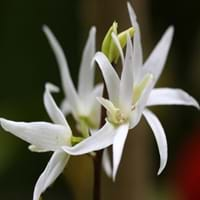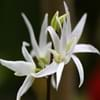Life Span
Annual
Perennial
Type
Epiphyte
Bulb or Corm or Tuber
Origin
Southeastern Asia, China, Japan, Melanesia
Mediterranean, Turkey
Types
Not Available
Not Available
Habitat
Humid climates, Subtropical climates
meadows, Terrestrial
USDA Hardiness Zone
11-15
3-9
Sunset Zone
Not Available
21,22
Habit
Clump-Forming
Clump-Forming
Flower Color
White, Light Yellow, Violet, Ivory
White, Blue, Pink, Violet
Flower Color Modifier
Not Available
Bicolor
Fruit Color
Non Fruiting Plant
Not Available
Leaf Color in Spring
Green, Light Green
Green
Leaf Color in Summer
Green, Light Green
Light Green
Leaf Color in Fall
Green, Light Green
Several shades of Green
Leaf Color in Winter
Green, Light Green
Light Green
Leaf Shape
Subulate
Long Linear
Plant Season
Spring, Summer, Fall, Winter
Spring, Winter
Sunlight
Partial shade
Full Sun, Partial Sun
Type of Soil
Not Available
Loam
The pH of Soil
Not Available
Acidic, Neutral, Alkaline
Soil Drainage
Well drained
Well drained
Bloom Time
Summer
Early Spring, Late Winter
Tolerances
Not Available
Drought
Where to Plant?
Ground
Container, Ground, Pot
How to Plant?
Divison
From bulbs, Seedlings
Plant Maintenance
Medium
Medium
Watering Requirements
Allow to dry out slightly between watering
Average Water Needs, Do Not over Water, Do not water frequently, Keep the ground moist but not water-logged, Never Over-water
In Summer
Lots of watering
Lots of watering
In Spring
Moderate
Moderate
In Winter
Average Water
Average Water
Soil pH
Not Available
Acidic, Neutral, Alkaline
Soil Type
Not Available
Loam
Soil Drainage Capacity
Well drained
Well drained
Sun Exposure
Partial shade
Full Sun, Partial Sun
Pruning
Remove damaged leaves, Remove dead branches, Remove dead leaves
Remove damaged leaves, Remove dead branches, Remove dead leaves
Fertilizers
All-Purpose Liquid Fertilizer
All-Purpose Liquid Fertilizer
Pests and Diseases
Red blotch
Red blotch
Plant Tolerance
Drought
Drought
Flower Petal Number
Single
Single
Foliage Texture
Coarse
Fine
Foliage Sheen
Matte
Matte
Attracts
Not Available
Bees, Flying insects
Allergy
Not Available
Skin rash
Aesthetic Uses
Beautification, Bonsai, Borders
Beautification, Bouquets, Ground Cover, Showy Purposes
Beauty Benefits
Not Available
Not Available
Environmental Uses
Air purification
Air purification
Medicinal Uses
Not Available
No Medicinal Use
Part of Plant Used
Flowers
Flowers
Other Uses
Used as Ornamental plant
Decoration Purposes, Showy Purposes, Used as Ornamental plant
Used As Indoor Plant
No
Yes
Used As Outdoor Plant
Yes
Yes
Garden Design
Container, Hanging Basket, Houseplant, Rock Garden / Wall, Tropical
Alpine, Container, Foundation, Lawns and Turf, Mixed Border, Rock Garden / Wall, Wildflower
Botanical Name
ERIA merrillii
CHIONODOXA
Common Name
Eria, Orchid
Chionodoxa, Glory-of-the-Snow
In German
Eria
Chionodoxa
In French
Eria
Chionodoxa
In Spanish
Eria
Chionodoxa
In Portuguese
eria
Chionodoxa
In Polish
Eria
Chionodoxa
In Latin
Pinalia
Chionodoxa
Phylum
Tracheophyta
Platyhelminthes
Order
Asparagales
Liliales
Family
Orchidaceae
Liliaceae
Clade
Angiosperms, Monocots
Angiosperms, Monocots
Tribe
Podochileae
Not Available
Subfamily
Epidendroideae
Not Available
Properties of Eria and Chionodoxa
Wondering what are the properties of Eria and Chionodoxa? We provide you with everything About Eria and Chionodoxa. Eria doesn't have thorns and Chionodoxa doesn't have thorns. Also Eria does not have fragrant flowers. Eria has allergic reactions like Not Available and Chionodoxa has allergic reactions like Not Available. Compare all the properties and characteristics of these two plants. Find out which of these plant can be used as indoor plant. If you are interested to decorate your house and garden, find out aesthetic uses, compare them and select the plant which will beautify your surrounding. Along with beautification, try comparing medicinal and edible uses of Eria and Chionodoxa and you can choose the plant having best and most benefits.
Season and Care of Eria and Chionodoxa
Season and care of Eria and Chionodoxa is important to know. While considering everything about Eria and Chionodoxa Care, growing season is an essential factor. Eria season is Spring, Summer, Fall and Winter and Chionodoxa season is Spring, Summer, Fall and Winter. The type of soil for Eria is Not Available and for Chionodoxa is Loam while the PH of soil for Eria is Not Available and for Chionodoxa is Acidic, Neutral, Alkaline.
Eria and Chionodoxa Physical Information
Eria and Chionodoxa physical information is very important for comparison. Eria height is 25.50 cm and width 25.40 cm whereas Chionodoxa height is 10.20 cm and width 5.10 cm. The color specification of Eria and Chionodoxa are as follows:
Eria flower color: White, Light Yellow, Violet and Ivory
Eria leaf color: Green and Light Green
Chionodoxa flower color: White, Blue, Pink and Violet
- Chionodoxa leaf color: Green
Care of Eria and Chionodoxa
Care of Eria and Chionodoxa include pruning, fertilizers, watering etc. Eria pruning is done Remove damaged leaves, Remove dead branches and Remove dead leaves and Chionodoxa pruning is done Remove damaged leaves, Remove dead branches and Remove dead leaves. In summer Eria needs Lots of watering and in winter, it needs Average Water. Whereas, in summer Chionodoxa needs Lots of watering and in winter, it needs Average Water.





